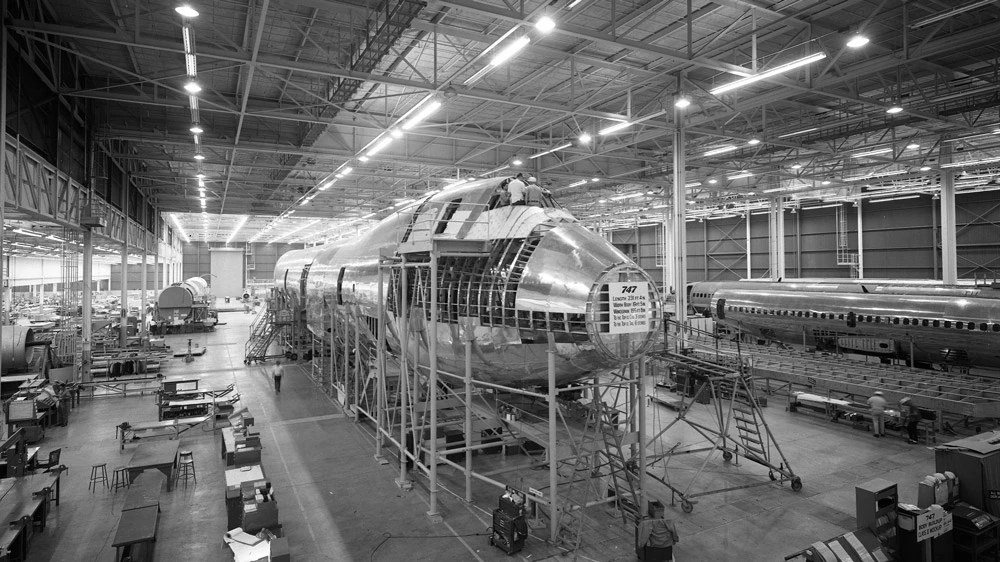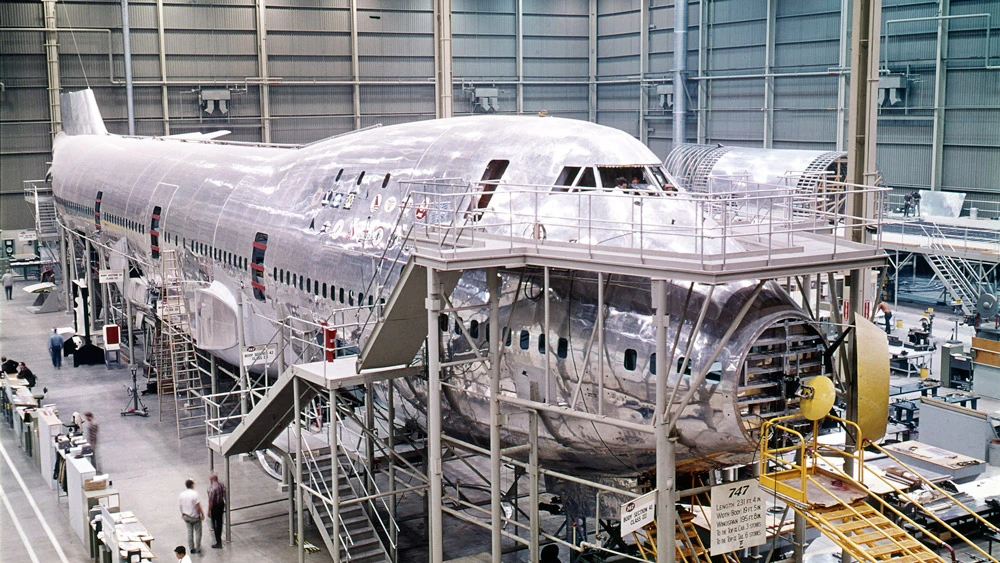aviation
After 56 years, production of the Boeing 747 is coming to an end
The iconic jumbo jet first took off in 1969, and now the 1,574th and last Boeing 747 has been produced. This is just one of the many extraordinary achievements of this special aircraft.
author: Andreas Spaeth | 7 mins reading time published on: 10.01.2023
author:
Andreas Spaeth
has been traveling the world as a freelance aviation journalist for over 25 years, visiting and writing about airlines and airports. He is frequently invited to appear on radio and TV programs to discuss current events in the sector.
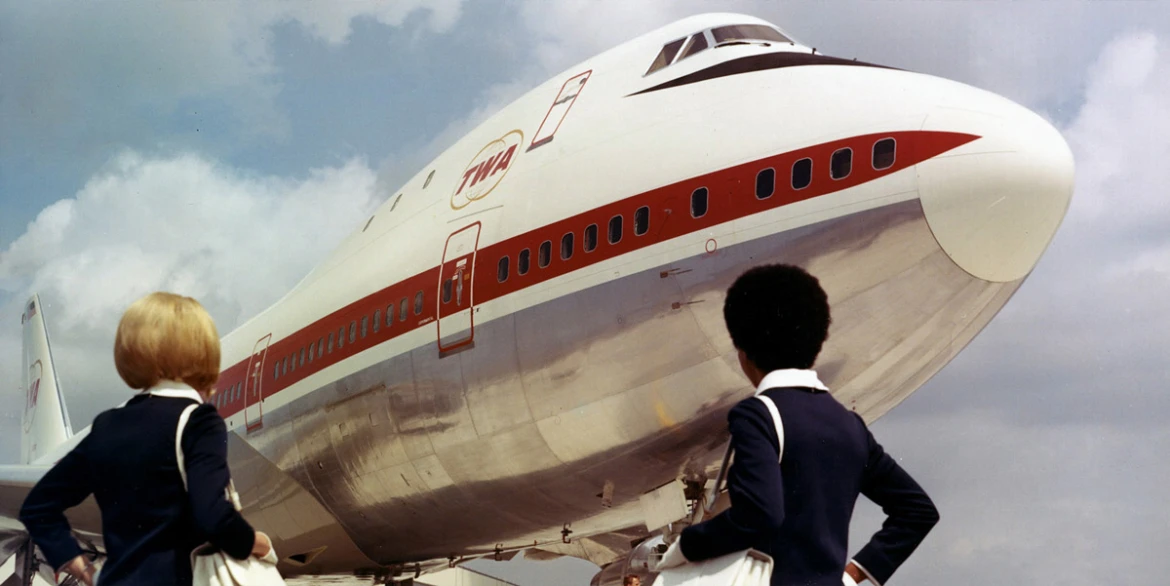
©Archiv Boeing Commercial Airplanes
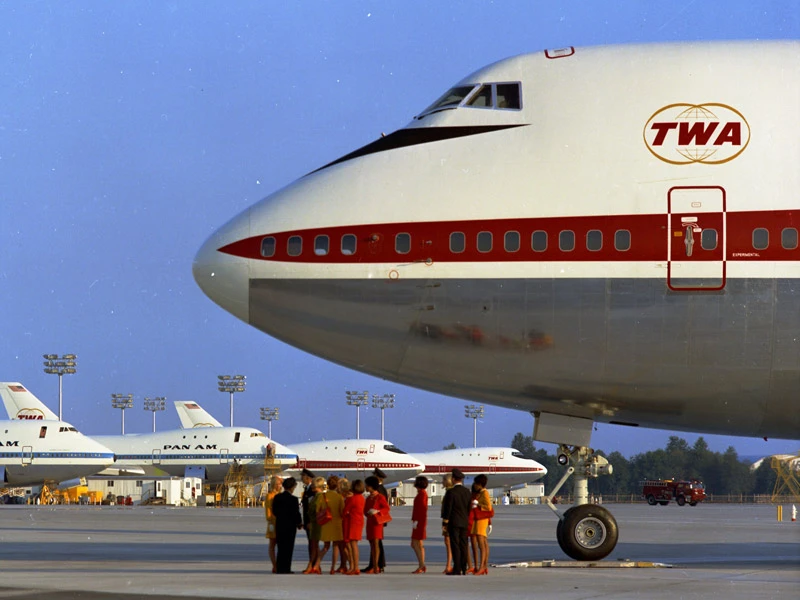

©Archiv Boeing Commercial Airplanes


©Archiv Boeing Commercial Airplanes
At the beginning of 1970, the first Boeing 747s were delivered to major U.S. customers and first operators Pan Am and TWA.
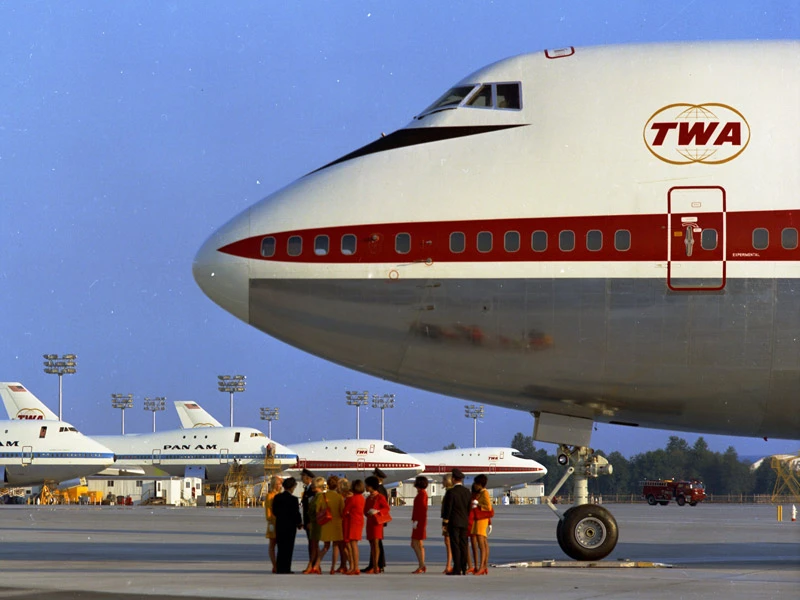
©Archiv Boeing Commercial Airplanes
A glorious era is coming to an end at the start of 2023: after 56 years, production of the Boeing 747 is shutting down. The last of its kind is also the 1,574th one built, a 747-8F freighter that Atlas Air will operate for the logistics group Kuehne & Nagel. The Boeing 747 achieved the greatest quantum leap in the history of passenger aviation: its predecessor, the Boeing 707, could hold only up to 189 passengers, but the jumbo jet was initially certified for up to 550 passengers and later could carry as many as 660.
It all started on a fishing trip
The creation of the 747 is the stuff of myth and legend. In 1965, Boeing CEO William Allen and Pan Am founder Juan Trippe, the two most influential men in aviation at the time, were on their annual salmon fishing trip when they made a gentleman’s agreement to build the world’s largest passenger jet. They sealed the deal with a handshake and without signing any official documents. Today, it’s hard to believe that a project that risked the future of both companies and would cost billions of dollars came about in such an informal way. “Basically, Tripp said, ‘You build it, I’ll buy it.’ And Allen replied: ‘I’ll build it if you buy it.’ They didn’t sign a contract, but that was the start of the program,” recalled chief engineer Joe Sutter, the “father of the 747,” who died in 2016.
In today’s digital age of computer design and virtual 3D models that can be created with a few mouse clicks, it’s hard to imagine the challenge that the Boeing 747 engineers faced in the mid-1960s. It was clear that the airlines, especially Pan Am, wanted a much larger aircraft than had ever been built before—in other words, completely uncharted territory. For Trippe, the 707 was the benchmark, so he held on to the original idea of a double-decker aircraft for a long time. The plan was to mount two slightly enlarged 707 fuselages on top of each other. Initially, there were more than 200 design drafts for the 747, many of which came from a tender for a new military transport aircraft that Lockheed had won with the C-5A. About 50 designs were looked at more closely, almost all of them double-decker. By mid-1965, however, Boeing had abandoned the idea of using the 707 as a base, whether stretched or double-decker.
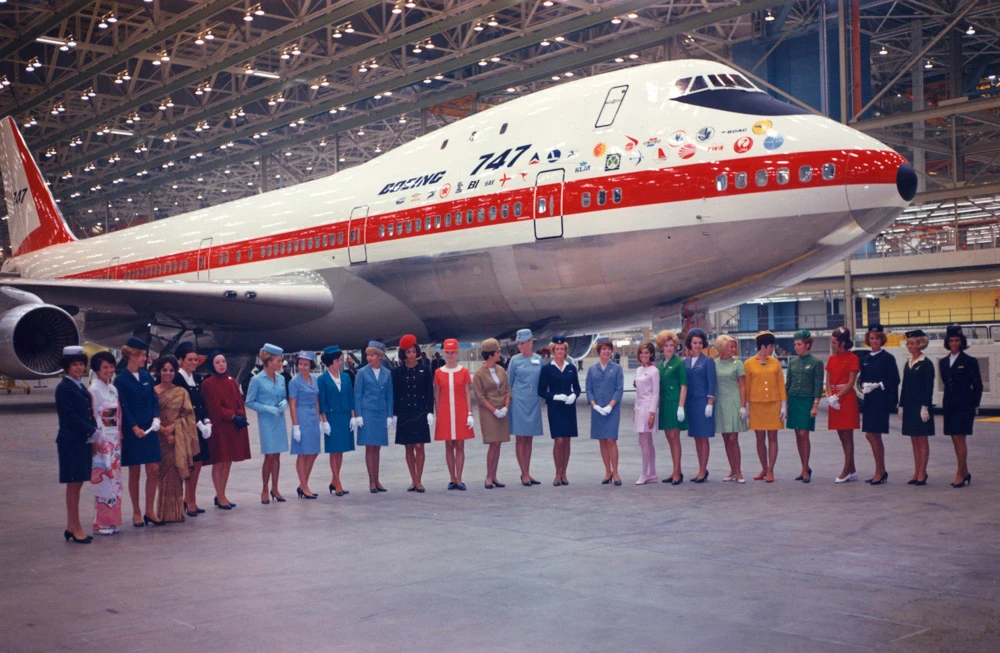
©Archiv Boeing Commercial Airplanes
Held in Everett in 1968, the unveiling ceremony for the Boeing 747 prototype was attended by cabin crew from all customer airlines.


©Archiv Boeing Commercial Airplanes


©Archiv Boeing Commercial Airplanes
View of the flight line in Everett in 1970: U.S. airlines initially received their first Boeing 747s sooner than their foreign counterparts did.
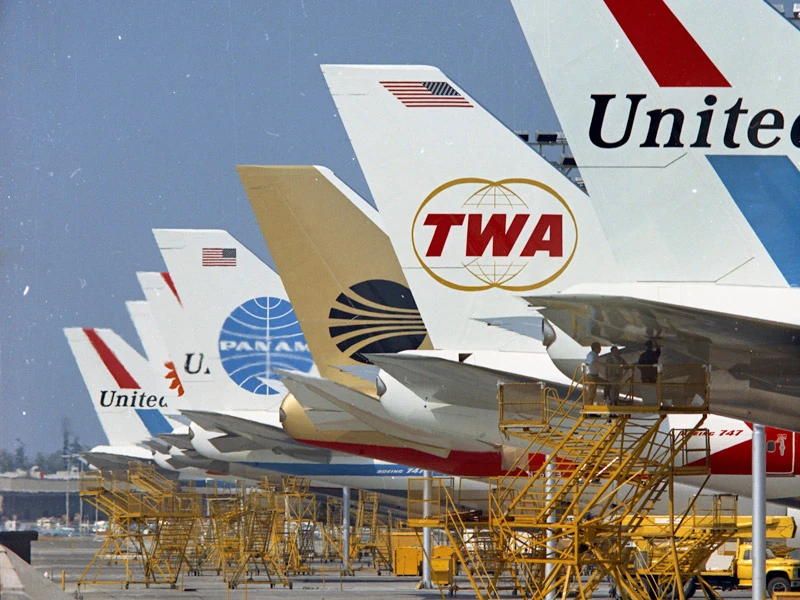
©Archiv Boeing Commercial Airplanes
Just bridging the gap until the supersonic era
The 747 was initially intended to be merely a transitional aircraft, biding time until most intercontinental passengers would fly at supersonic speeds in either the Concorde or the Boeing SST, which were being developed at the same time. After that, she was to remain in operation as a freighter. The cockpit was therefore moved above the main deck to make space for a fuselage nose that could be opened upward, allowing for easy loading. This configuration left a small area behind the cockpit, the 747’s famous “hump.” Instead of building two narrower decks on top of each other as initially considered, the 747 was equipped with just the one main deck. However, measuring over six meters across, it offered the widest cabin ever seen in a passenger aircraft; seats could be removed to accommodate two cargo containers side by side. On April 13, 1966, Pan Am announced an order for 25 Boeing 747s, valued at 525 million U.S. dollars (about 4.8 billion U.S. dollars today), thus officially launching the 747 program.
The contract with Pan Am called for an aircraft that could carry 370 passengers and their luggage, with a range of at least 8,263 kilometers at a speed of Mach 0.877—nearly 88 percent the speed of sound. To build the 747 production facility, in June 1966 Boeing purchased about 780 acres of wooded marshland near the Paine Field airport in Everett, a city north of Seattle, Washington. Today, it is still the largest building in the world by volume. By comparison, the fourth largest is currently the former Cargolifter airship hangar in Brandenburg, and Berlin’s Tropical Islands resort would fit inside the 747 production halls two and a half times over. Building the production facility was a merciless race given the purely analog tools of the time. The factory was being built while work on the 747 design was still in progress.
Wooden models of the aircraft were essential
Under this intense time pressure, the engineers built wooden models of individual parts and of the entire aircraft in order to see how they worked and to test the production processes. Everything was meticulously planned—the prototype was to fly within two years, and the rollout for the Boeing 747 was set for September 30, 1968. All this less than three years after Pan Am signed the letter of intent to order and only two and a half years after the widebody design was agreed upon. The team was able to keep to this extremely ambitious plan: the new Queen of the Skies appeared precisely on time.
The “Spacious Age,” as the 747 era was called, officially began with the aircraft’s maiden flight on February 9, 1969. It lasted an hour and 16 minutes and went unusually smoothly. However, the huge Pratt & Whitney JT9D engines, in their still unimagined dimensions, became one of the biggest problems of the 747 flight tests. It was also the engines that delayed the 747’s debut passenger flight for first operator Pan Am on the route from New York to London on January 21, 1970. Nevertheless, the 747 quickly made a name for itself, entering regular service with airlines around the world at incredible speed.
By 1975, the global 747 fleet had carried 100 million passengers. Probably the most important decision for the 747’s long career was made in 1985 with the launch of the 747-400. This was the twelfth version of the jumbo jet, but by far its most successful. Boeing sold nearly 400 units of the 747-200, but the upgraded 747-400—featuring a glass cockpit, longer upper deck, improved turbofan engines (Pratt & Whitney’s PW4000 or GE’s CF6) and winglets—managed to tally nearly 700 orders over the next two decades. It first entered commercial service in 1989. In October 1993, Boeing reached another important milestone with delivery of the 1,000th 747, which went to Singapore Airlines.
Boeing and Lufthansa launched the refurbished 747-8 in 2005
The original concept from the 1960s has certainly proven its staying power. One illustration of this is that Boeing, together with launch customer Lufthansa, decided in 2005 to issue another 747 generation—even though there was now a competitor with a full two decks in the form of the Airbus A380. The Boeing 747-8 was created with the active participation of the still sprightly 747 legend Joe Sutter. Four decades after the first 747 was produced, Boeing was now stretching the fuselage for the first time, making the 747-8 the longest aircraft in the world. The Boeing 777-9 will break that record when it enters commercial service in the next few years.
The 747-8 received new wings and engines, both taken from the successful Dreamliner, the Boeing 787. But then it was precisely this new generation of ultra-efficient twinjets that put an end to the production of all four-engine long-haul widebody jets. However, the Boeing 747 will continue to play a major role once the U.S. Air Force’s two new presidential aircraft are ready. They are expected to take off starting in 2027.

©Boeing
Prototype of the Boeing 747-8I, the passenger version, which had its maiden flight on March 20, 2011 and has been operated by Lufthansa since June 1, 2012.
Fast facts about the Boeing 747
75,000 technical drawings by engineers and 15,000 hours in the wind tunnel were needed to build the first Boeing 747
A Boeing 747-400 consists of six million parts, half of which are rivets
The engine noise of the Boeing 747-400 in 1989 was only half as loud as that of the first 747-100 in 1969
With a volume of 876 cubic meters, the Boeing 747-400 offered the largest interior space at the time (later surpassed by the 747-8 and the Airbus A380). That’s the equivalent of more than three houses with 135 square meters of living space each
The wings of a Boeing 747-400 cover an area of 524.9 square meters—enough space to park 45 midsize cars
The wingspan of a Boeing 747-8 is equal to the length of two Boeing 737-700s placed end to end
At 19.5 meters, the tail assembly of a Boeing 747 is as high as a six-story building
274 kilometers of cable run through a Boeing 747-400
By 2017, over 5.6 billion people had flown in a Boeing 747—over 80 percent of the global population at that time
As of 2017, the global 747 fleet had traveled more than 78 billion kilometers, equivalent to 101,500 trips to the moon and back
The cockpit of the Boeing 747-400 has only 365 switches, dials and lights, compared with 971 in the Boeing 747-100




